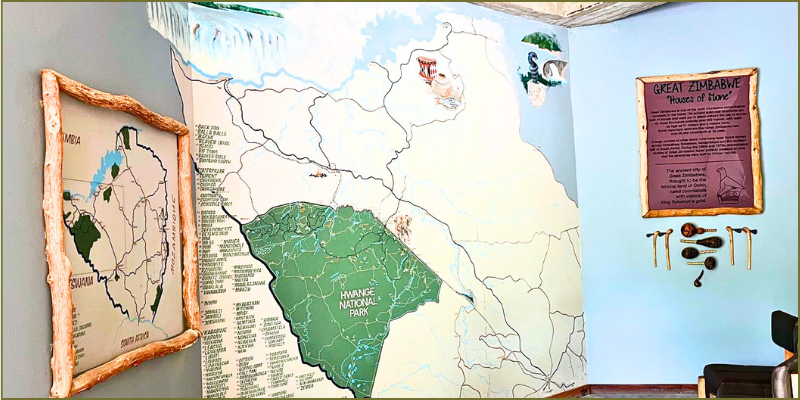History of the Nambya people
Jun 26, 2025
There’s a story you’ll start to hear the more time you spend in Hwange. It’s not written down in most books, or talked about as often as it should. This one is usually shared quietly, with a gesture toward the hills or a long pause before an elder continues. It’s the story of the BaNambya people. And once you start noticing it, you begin to see just how much of this land still carries their presence.
The BaNambya trace their roots back to Great Zimbabwe. They came from the Rozvi dynasty, part of one of the great stone-building cultures of southern Africa. When they left, they brought with them their language, their incredible knowledge of stonework, agriculture and leadership. They built their own settlements to the north, places like Bumbusi and Shangano, where you can still see the remains of the walls they raised with their own hands. Their structures mirror the same architectural patterns found at Great Zimbabwe, though fewer people talk about them. Maybe because they’re tucked away deeper into the bush. Maybe because the stories are still held more by memory than by paper.

Bumbusi, for instance, is not far from where the elephants roam today. The site blends into the environment if you're not looking carefully. But for those who walk through the old stone passageways and stop by the remains of the grain bins, it's easy to picture what life might have looked like back then. These places where the BaNambya people called home, served many purposes. They were also ceremonial spaces, places where rainmaking rituals were performed and where generations passed down knowledge of the land and the skies.
By the late 1800s, the BaNambya had made this region home, living across what we now call Hwange National Park. But in 1927, when it was declared a special protected area, people were displaced. Whole communities had to move out to make way for what would later become one of Africa’s most important wildlife parks. Still, the memory of those settlements, the old ways, the sacred hills and rituals, they didn’t disappear.
Today, there are about 100,000 Nambya people, many living around Hwange and Victoria Falls. You’ll still hear their language spoken in villages nearby. You’ll see traces of their craft in woven baskets and ceremonial beadwork. But unless someone points it out, most visitors miss it completely. That’s part of the reason places like the BaNambya Cultural Exhibit were created at Gwango Heritage Resort. A space that has tried to bring some of that history back into the open again. This exhibit includes a replica homestead, traditional tools and shared stories gathered from local chiefs and elders. It’s a living reminder that the people who once built Bumbusi and laid the foundations of this region’s early history, are still here and are still very much part of this land.

You can visit the old ruins if you ask around. Some are just a short drive from the main road, others need a little more effort to reach. But each one gives you a different kind of connection. You will start to understand that the wildlife, the landscape and the culture are all part of the same story. And in places like Hwange, those layers are still close to the surface.
Next time you are visiting, take the time to ask questions, visit the exhibit and make sure you walk through the ruins. Because long before this was a national park, it was a home. And if you listen closely, the land will still tell you that. That this is home.